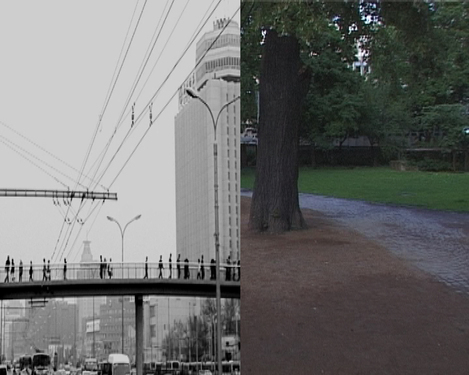Just testing with the M HKA Content!!
Liang Yue
What can a deaf person hear? What do we hear if we don’t use our ears? What will happen if there is no more air to transmit sound waves? Liang Yue immerses the spectator in a moody, brooding, grey film with few dashes of colour. The leitmotif is the image of a deaf and dumb girl sitting on a bench in a busy shopping street in the hectic city of Shanghai. Against an everyday background of pedestrians, cyclists, skyscrapers, bridges, fish in a jar, a bird in a cage and a park in the city. The actions are limited to sitting, watching, drinking, walking and waiting. Waiting for the unknown. Deaf Land is far more atmospheric than narrative. Although the film is not about anything in particular, several images do provide us with narrative reference points. For example, at a certain point Liang Yue shows the image of a bird in a cage and of the girl on the bench on a split screen. Her aim is not to suggest that both are imprisoned, but that the bird is also deaf. It is her deceased grandfather’s pet. The old animal has spent all its life in captivity and has experienced nothing else. The artist sees the girl, who cannot and does not wish to speak, who lives in her own world and is almost invisible to the passers-by, as a character who is very close to her, as a substitute for some of her emotions. These emotions are also evoked by soft piano music which subtly overrides the noise of the city. Emotions and feelings play a central role. It is all about sounds from the heart or from heaven, and seeking a new way to hear. What can we hear if we don’t use our ears?




